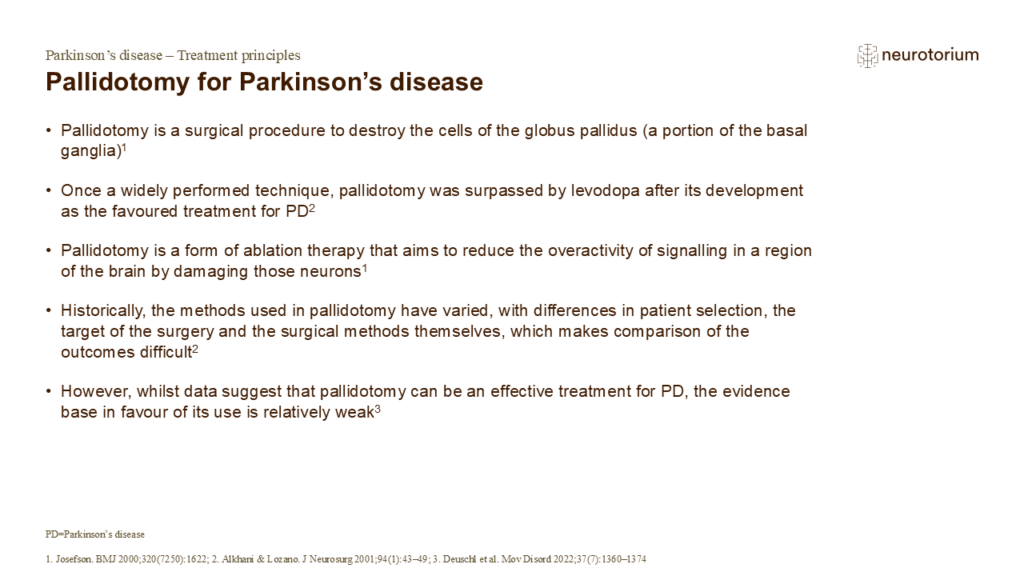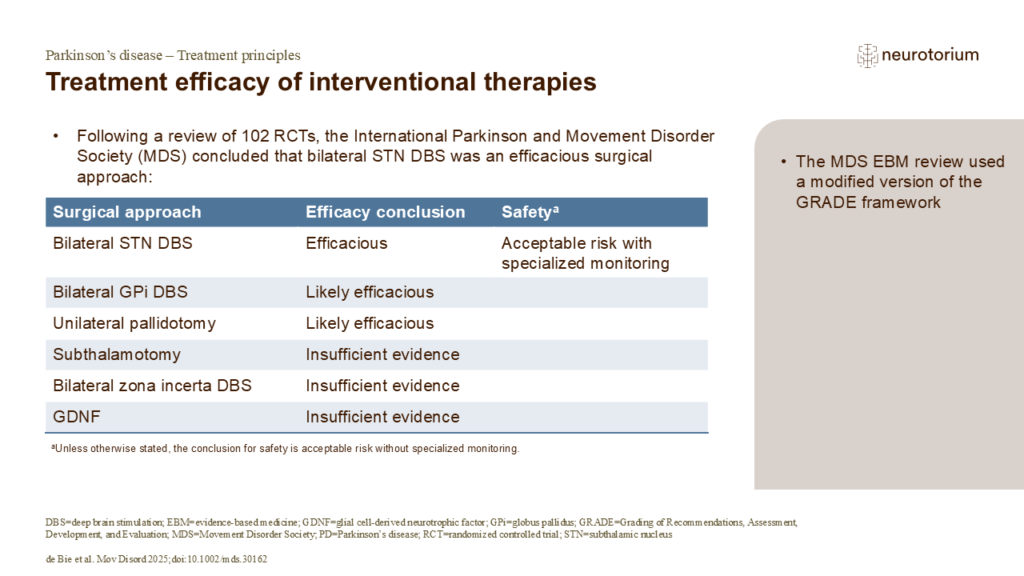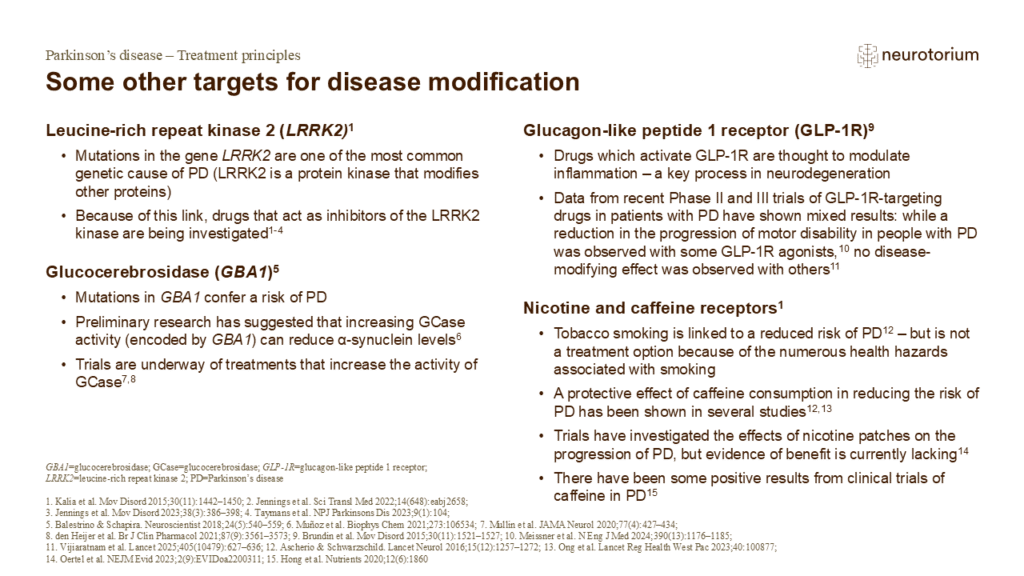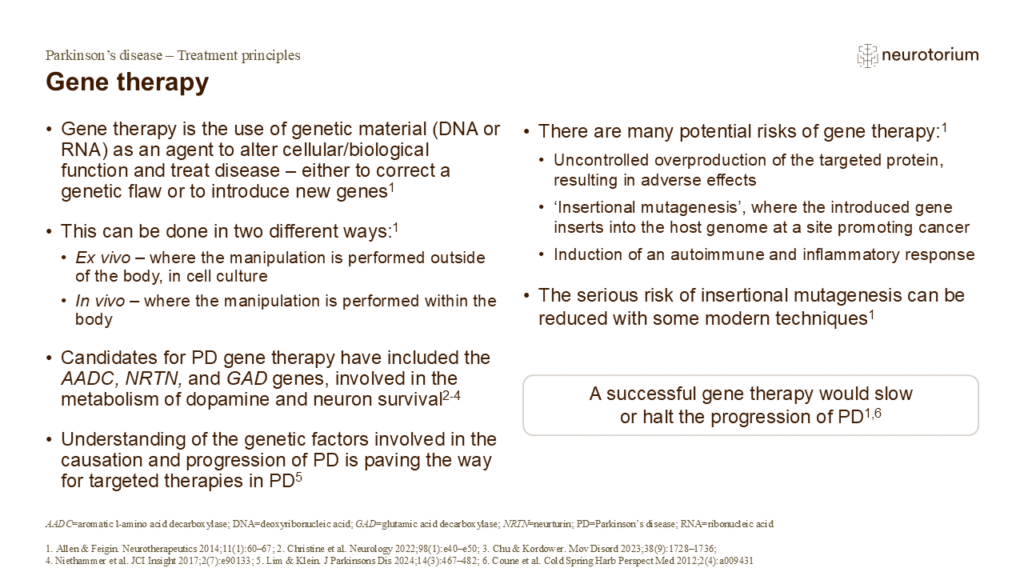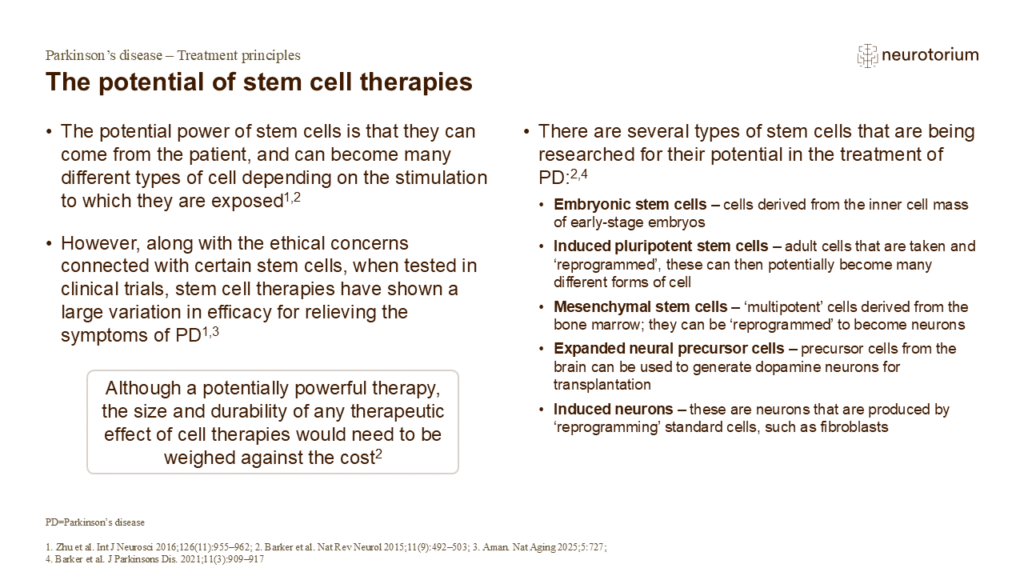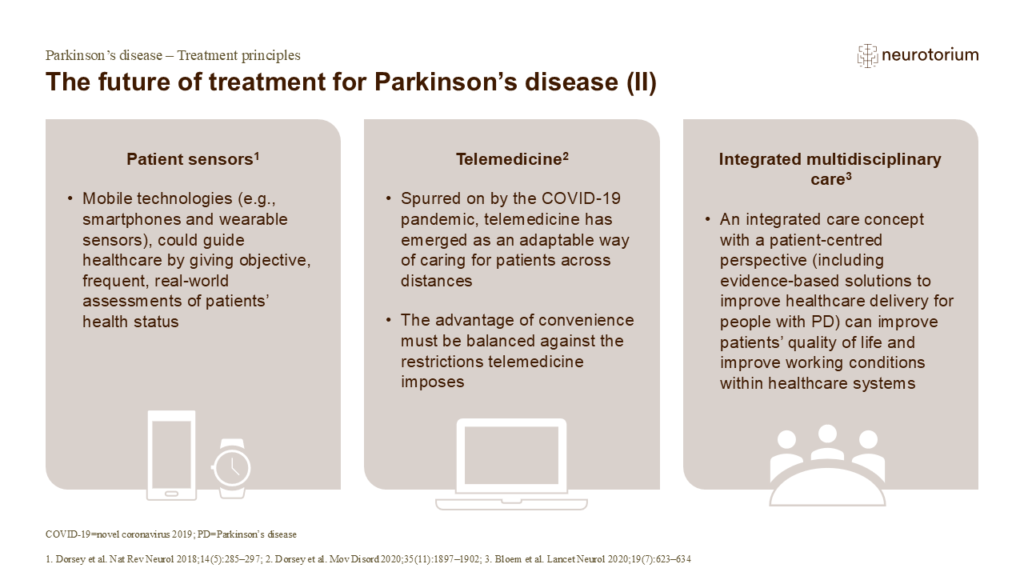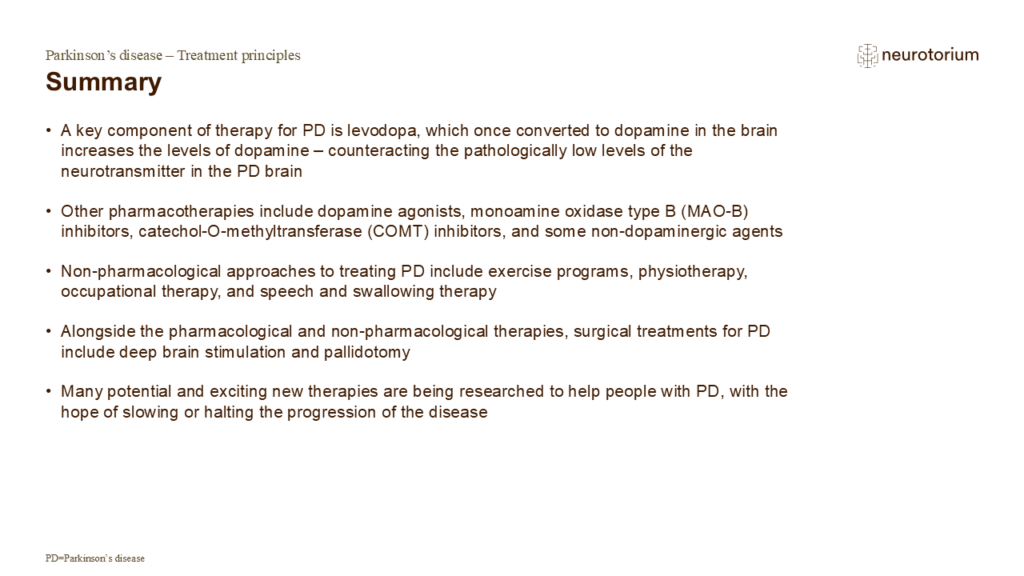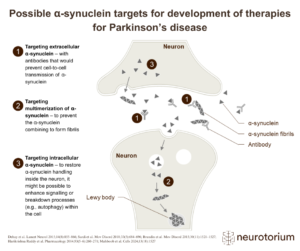Index for
slide deck
Introduction
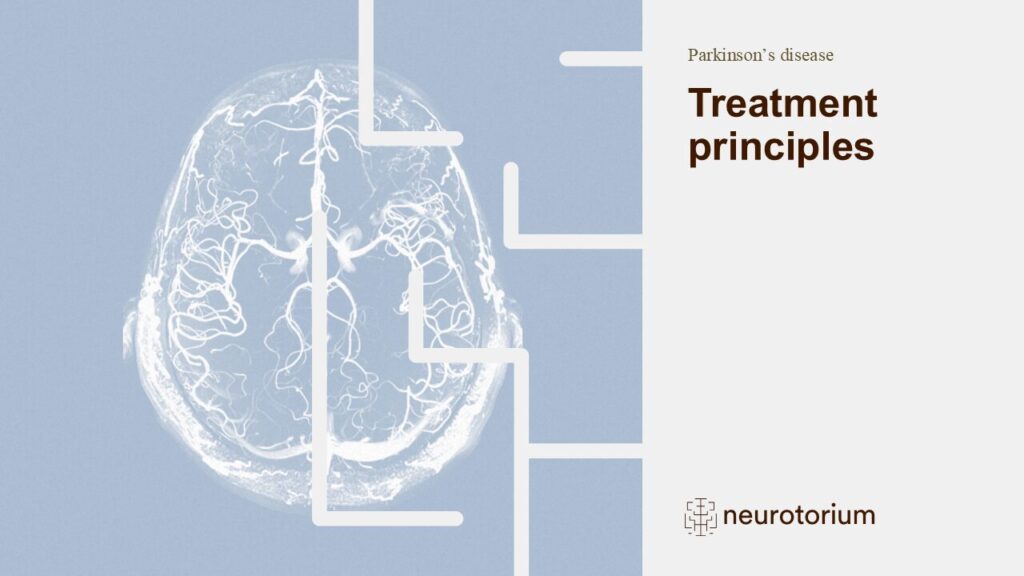
Parkinson’s disease - Treatment principles

Approaches to the treatment of Parkinson’s disease
Treatment approaches for Parkinson’s disease include pharmacological, non-pharmacological and surgical methods, as highlighted on the slide and in the rest of the presentation.1-7
References:
1. Stocchi F. Conventional treatment-related motor complications: their preventi…
Pharmacological approaches to treating Parkinson’s disease
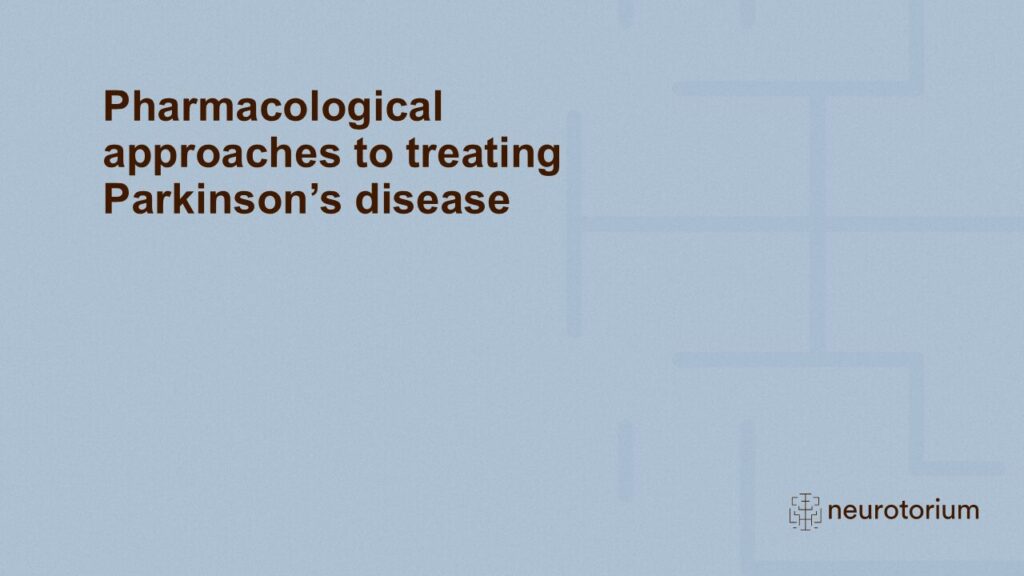
Pharmacological approaches to treating Parkinson’s disease
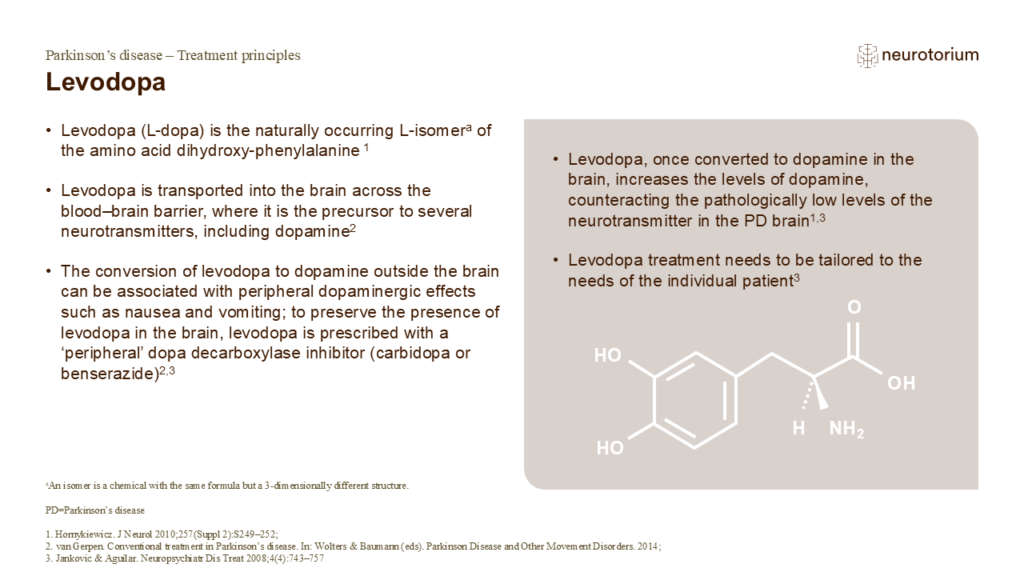
Levodopa
Once swallowed, orally-administered levodopa moves down the gastrointestinal tract – a process sometimes delayed in PD due to impaired gastric motility – until it is absorbed into the blood via the duodenum.2 From the circulation, levodopa eventually makes its way to the …

Mechanism of action of levodopa plus a peripheral dopa decarboxylase inhibitor
The slide shows the mechanism of action of levodopa, when taken in combination with a dopa decarboxylase inhibitor (DDI). Levodopa can be metabolized to dopamine on either side of the blood–brain barrier.1 It is therefore usually administered with a DDI and with a catecho…

Strengths and limitations of levodopa
Although levodopa has been a major success story for the management of PD, it does have some limitations, such as the development of dopa-related response fluctuations (both motor and non-motor) and drug-induced dyskinesias.4
A single dose of levodopa/decarboxylase inhibi…

Change in levodopa response over time – ‘wearing-off’
Levodopa is the major symptomatic therapy for PD and provides benefit to virtually all patients.1 During the early stage, the effects of levodopa tend to be long-lasting, and motor complications usually take a long time to develop.1 Beyond this early stage, however, patie…

Dyskinesia and motor fluctuations
Whilst the above image shows a typical pattern of levodopa-related motor fluctuations and dyskinesias, adjunctive treatments can prolong ON time, reduce OFF time, and ameliorate dyskinesias.1,3
References:
1. Stacy M. Medical treatment of Parkinson disease. Neurol Clin 20…

Other medications used in the treatment of Parkinson’s disease (I)
Dopamine agonists play a major role in the treatment of PD.6 They act by directly stimulating intact postsynaptic receptors in the brain linked to motor control.6 Although they tend to be less potent than levodopa in reducing parkinsonian motor symptoms, dopamine agonists…

Other medications used in the treatment of Parkinson’s disease (II)
Patients who are experiencing ‘wearing-off’ may benefit from taking a monoamine oxidase type B inhibitor (MAO-B inhibitor).5,6 MAO-B inhibitors inhibit the breakdown of either dopamine or levodopa in the body, thus prolonging their therapeutic effect and time spent in ‘ON…
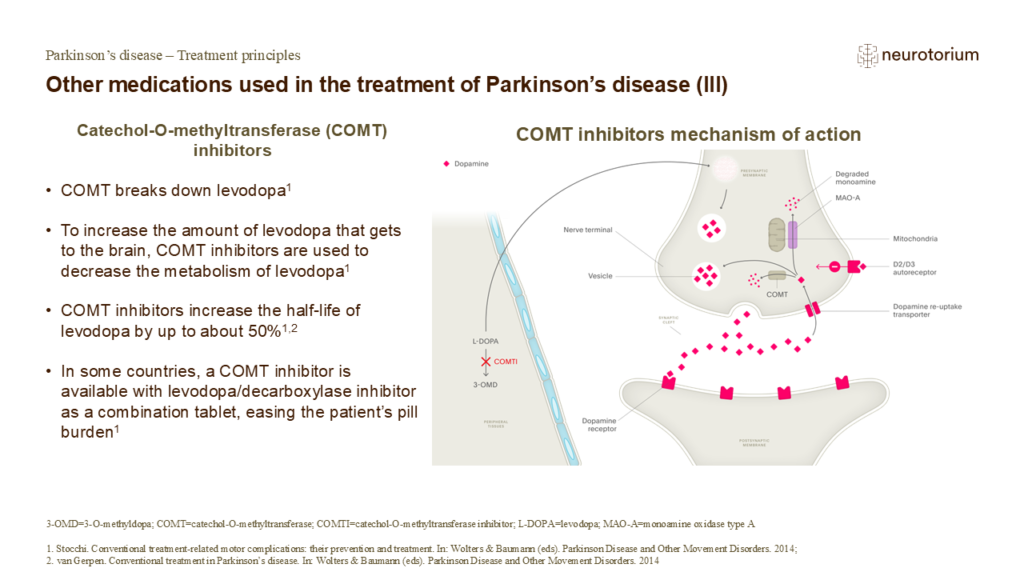
Other medications used in the treatment of Parkinson’s disease (III)
Patients who are experiencing ‘wearing-off’ may benefit from taking a catechol-O-methyltransferase inhibitor (COMT inhibitor).3,4 COMT inhibitors inhibit the breakdown of dopamine and of levodopa in the body, thus prolonging their therapeutic effect and time spent in ‘ON’…
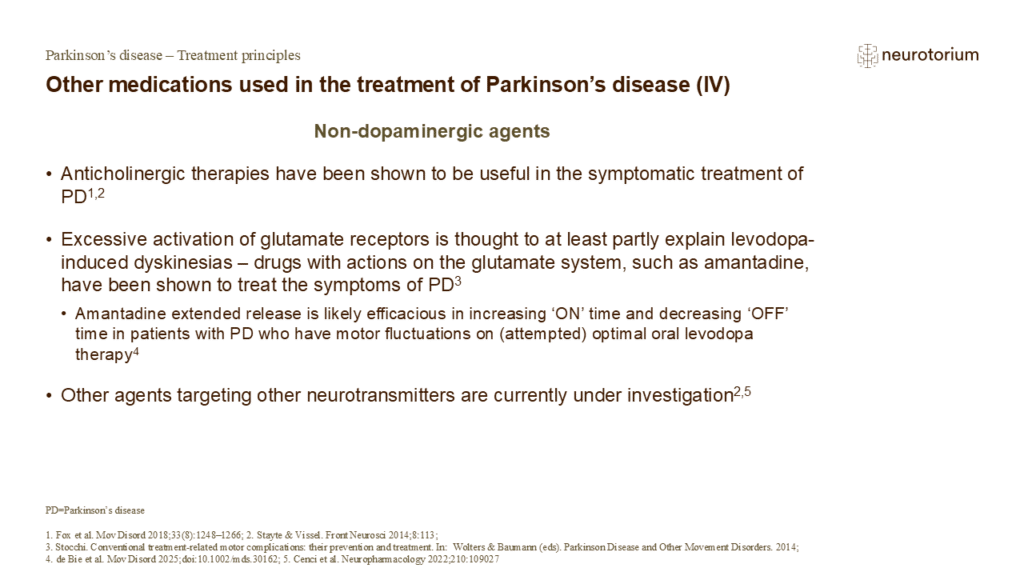
Other medications used in the treatment of Parkinson’s disease (IV)
Certain non-dopaminergic agents help to reduce dyskinesias,6 but have the limitation of worsening side effects, such as hallucinations and psychosis, in some individuals.7 Non-dopaminergic agents have also been licensed for patients with moderate to advanced PD experienci…











